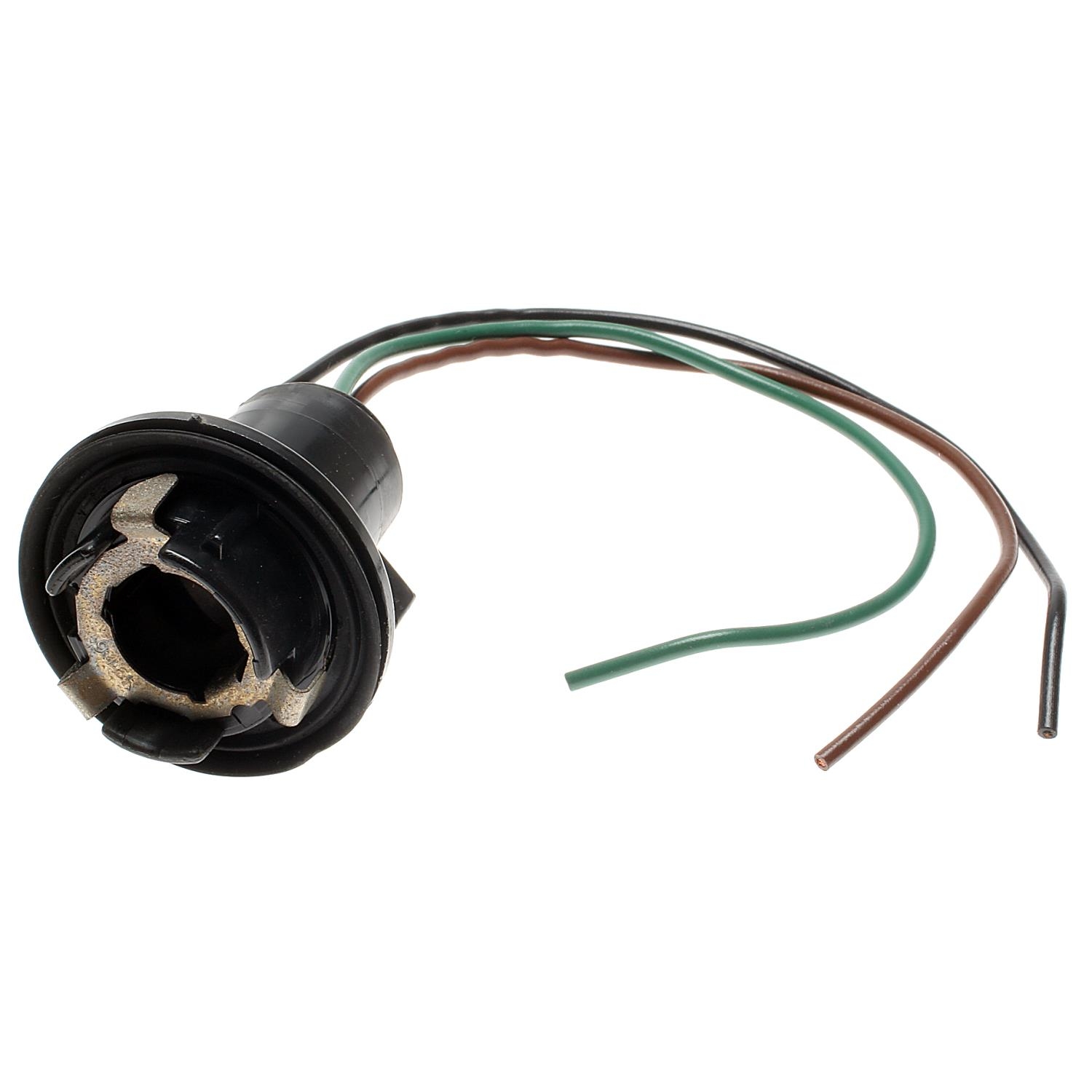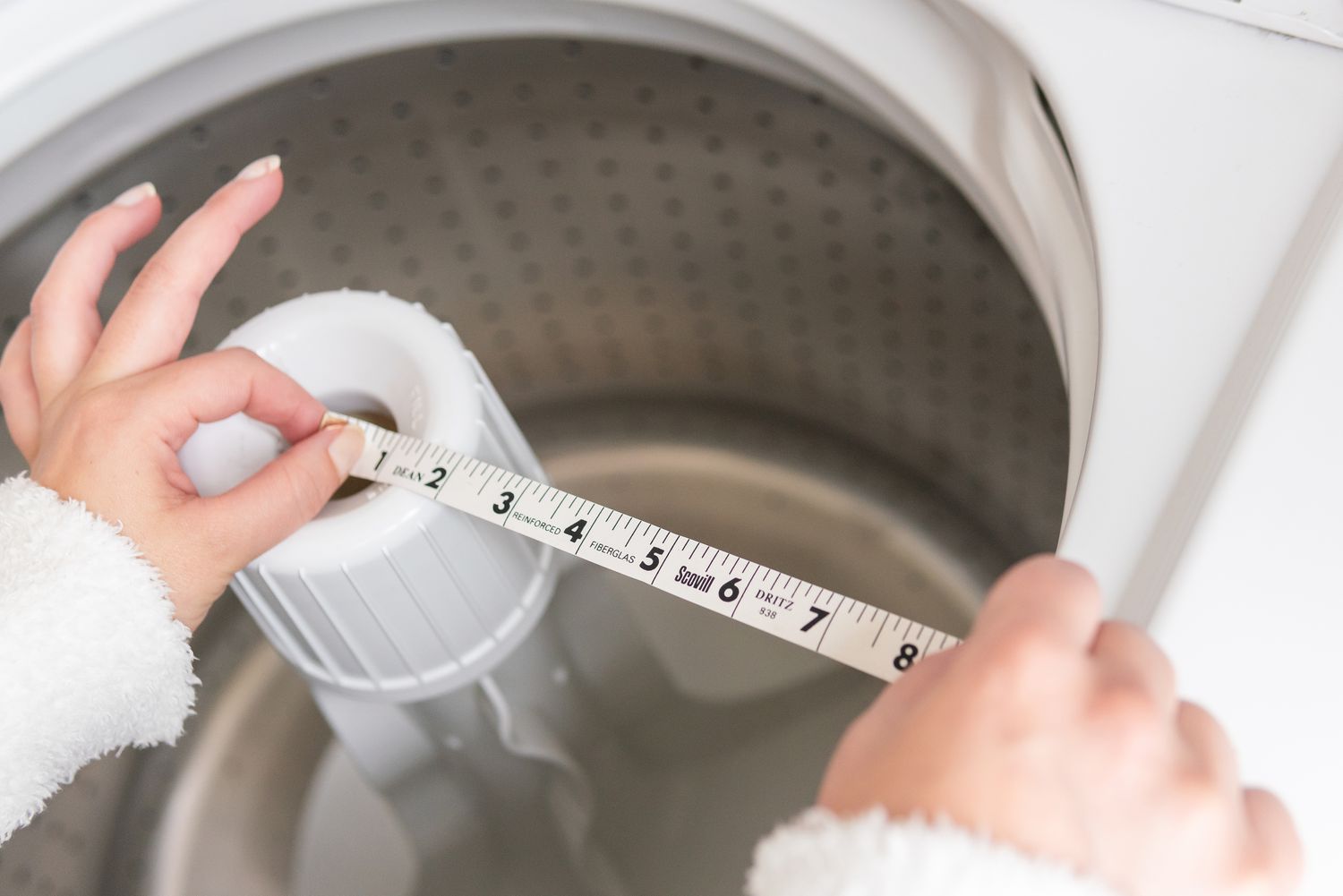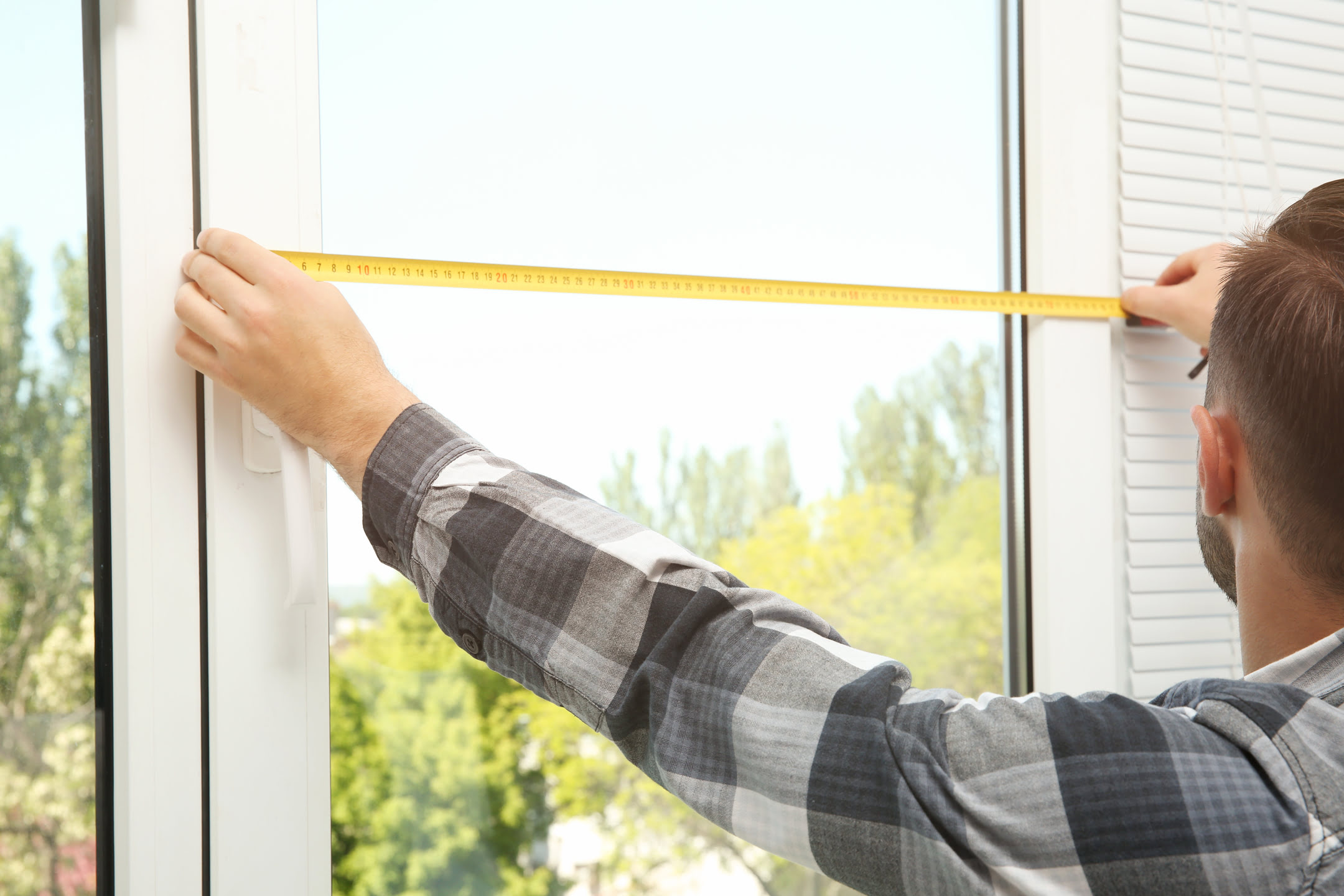

Articles
What Is A Standard Light Socket Size
Modified: August 27, 2024
Discover the standard light socket sizes in this informative article. Explore various socket sizes and learn about their compatibility with different light fixtures.
(Many of the links in this article redirect to a specific reviewed product. Your purchase of these products through affiliate links helps to generate commission for Storables.com, at no extra cost. Learn more)
Introduction
Light sockets play a crucial role in our everyday lives, allowing us to illuminate our homes, offices, and public spaces. However, not all light sockets are created equal. There are various types and sizes of light sockets designed to accommodate different light bulbs and fixtures. In this article, we will explore the topic of standard light socket sizes and learn why they are important to consider when replacing or installing light fixtures.
Light sockets, also known as lamp holders or lamp bases, are electrical devices that connect light bulbs to a power source. They provide a secure and stable connection while allowing for easy installation and removal of light bulbs. Light sockets are typically made of heat-resistant materials like porcelain, plastic, or metal to withstand the heat generated by the light bulb.
With the diverse range of light sockets available in the market, it’s important to understand the different types and sizes to ensure compatibility with your light fixtures and bulbs. Knowing the standard light socket sizes will help you choose the right replacement or make informed decisions when purchasing new light fixtures.
Next, we will dive deeper into the different types of light sockets and their specific uses to gain a comprehensive understanding of standard light socket sizes.
Key Takeaways:
- Understanding standard light socket sizes is crucial for choosing the right socket for your lighting needs, ensuring compatibility and safe operation.
- By knowing how to determine the size of a light socket, you can confidently select the appropriate socket for your specific light bulb and fixture combinations.
Read more: What Is The Standard Light Bulb Size
What is a light socket?
A light socket, also known as a lamp holder or bulb socket, is a device that connects an electrical light bulb to the power source. It provides a secure and stable connection while allowing for easy installation and removal of light bulbs. Light sockets come in various types and sizes to accommodate different light bulb bases and fixture designs.
The primary function of a light socket is to transmit electricity to the light bulb, enabling it to produce light. The socket contains a series of metal contacts that make contact with the base of the bulb, creating a circuit and allowing electricity to flow. Additionally, light sockets often include mechanisms such as screw threads, bayonet pins, or prongs that help to securely hold the bulb in place.
Light sockets are typically made from materials that can withstand the heat generated by the light bulb. These materials include porcelain, plastic, or metal, depending on the specific socket design and its intended purpose. Some sockets also incorporate insulation or heat-resistant coatings to further enhance safety and durability.
Light sockets are commonly found in a variety of lighting fixtures, including lamps, ceiling fixtures, pendant lights, wall sconces, and chandeliers. They are an essential component that allows for the easy replacement of light bulbs, providing flexibility and convenience for maintaining and adjusting the lighting in our homes and workplaces.
Now that we have a basic understanding of what a light socket is let’s explore the different types of light sockets in more detail.
Different types of light sockets
Light sockets come in a variety of types, each designed to accommodate different light bulb bases and fixture requirements. Understanding the different types of light sockets will help you determine the appropriate socket for your specific lighting needs. Here are some of the most common types:
1. Edison Screw (E26/E27): This is one of the most popular and widely used types of light sockets. It features a screw-in base with threads that fit standard incandescent and LED bulbs. The E26 is the most common size in North America, while the E27 is more prevalent in Europe.
2. Bayonet Mount (B22): Commonly used in Europe and Australia, this type of light socket has a unique bayonet mechanism with two pins that lock the bulb into place. The B22 socket is found in many ceiling fixtures and lamps.
3. GU10: This type of socket is specifically designed for GU10 base bulbs, which are commonly used in track lighting, recessed lighting, and spotlights. The GU10 socket features a twist and lock mechanism for secure bulb installation.
4. MR16: The MR16 socket is designed for MR16 bulbs, which are low-voltage halogen or LED bulbs commonly used in track lighting and landscape lighting. These sockets typically have two pins that connect to the bulb.
5. G4: This type of socket is used for miniature halogen or LED bulbs. The G4 socket has two prongs that connect to the bulb and is often found in under-cabinet lighting, desk lamps, and pendant lights.
6. Candelabra (E12): The candelabra socket is designed for smaller bulbs, usually with a smaller screw-in base. It is commonly found in chandeliers, wall sconces, and decorative light fixtures.
7. T8 and T12 (Fluorescent Sockets): These sockets are specifically designed for fluorescent tube lights. T8 and T12 sockets have different pin configurations to accommodate the respective bulb sizes.
8. Bipin (G9, G5.3, G6.35): Bipin sockets are found in various halogen and xenon bulbs. They feature two straight pins that connect to the bulb and are commonly used in desk lamps, pendant lights, and under-cabinet lighting.
It’s important to note that these are just a few examples of the many types of light sockets available. It’s crucial to identify the specific type and size of the socket required for your desired light bulb and fixture combination. This information can usually be found in the product specifications or consulted with a lighting professional.
Next, we will explore the standard light socket sizes that are commonly used in the lighting industry.
Standard light socket sizes
Standard light socket sizes refer to the commonly used sizes and specifications of light sockets in the lighting industry. While there are various socket sizes available, certain sizes have become standard due to their widespread use and compatibility with a wide range of light bulbs and fixtures. Here are the most common standard light socket sizes:
1. E26: The E26 socket, also known as the Edison Screw socket, is one of the most common standard socket sizes. It has a 26-millimeter diameter and is widely used in North America for general lighting applications. The majority of incandescent, LED, and CFL bulbs designed for household use have an E26 base.
2. E27: The E27 socket is similar to the E26 socket but is more commonly used in Europe, Asia, and other parts of the world. It has a 27-millimeter diameter and is compatible with E27 base bulbs, which are widely available in various bulb types and wattages.
3. E12: The E12 socket, also known as the Candelabra base, is smaller in size compared to the E26/E27 sockets. It has a 12-millimeter diameter and is often used in decorative lighting fixtures such as chandeliers, wall sconces, and table lamps. The E12 socket is mainly compatible with smaller bulbs, often lower wattage and candelabra-shaped.
4. GU10: The GU10 socket is designed for GU10 base bulbs, which are commonly used in track lighting, recessed lighting, and spotlights. The GU10 socket has two pins for connection and provides a twist and lock mechanism to secure the bulb in place.
5. G4: The G4 socket is used for miniature halogen or LED bulbs. It has two pins for connection and is commonly used in under-cabinet lighting, desk lamps, and pendant lights.
6. B22: The B22 socket, also known as the Bayonet Mount, is prevalent in Europe, Australia, and some parts of Asia. It features a unique bayonet mechanism with two pins that lock the bulb into place.
These are just a few examples of standard light socket sizes. Other socket sizes, such as GU5.3, G9, G6.35, T8, and T12, are also widely used for specific types of lighting applications. When replacing or installing light fixtures, it’s essential to identify the appropriate socket size to ensure compatibility with your desired light bulbs. Consult the product specifications or seek guidance from a lighting professional to choose the right socket size for your specific needs.
In the next section, we will explore how to determine the size of a light socket.
When replacing a light bulb, make sure to check the socket size to ensure compatibility. The most common standard light socket sizes are E26 (medium) and E12 (candelabra), but there are also other less common sizes to be aware of.
How to determine the size of a light socket
When replacing or installing light fixtures, it is important to determine the size of the light socket to ensure proper compatibility with the light bulb. Here are a few steps to help you determine the size of a light socket:
- Check the bulb base: The first step is to examine the base of the light bulb that the socket will accommodate. Different bulbs have specific base types, such as E26, E27, E12, GU10, etc. Look for any markings or labels on the bulb base that indicate the socket size.
- Measure the diameter: If the base markings are unclear or not present, you can measure the diameter of the socket using a ruler or caliper. Most standard socket sizes have specific diameter measurements. For example, an E26 socket has a diameter of 26 millimeters.
- Count the pins or prongs: Some socket types, like GU10 or G4, have pins or prongs for connection. Count the number of pins or prongs on the socket. GU10 sockets, for instance, have two pins.
- Consult the product specifications: If you are replacing a socket or purchasing a new fixture, check the product specifications provided by the manufacturer. The specifications should indicate the socket size, type, and any specific bulb compatibility.
- Ask a professional: If you’re unsure about the socket size or want to ensure accuracy, consult a lighting professional or an electrician. They have the knowledge and expertise to help you determine the correct socket size for your specific lighting needs.
By following these steps, you can accurately determine the size of a light socket and make informed decisions when purchasing bulbs or fixtures. It is crucial to ensure compatibility between the socket and the light bulb to avoid any installation or compatibility issues.
Now that you know how to determine the size of a light socket, let’s explore some common uses for standard light socket sizes.
Read more: What Is The Standard Refrigerator Size
Common uses for standard light socket sizes
Standard light socket sizes are used in various lighting applications and fixtures. Understanding the common uses for each socket size can help you choose the right socket for your specific lighting needs. Here are some common uses for standard light socket sizes:
- E26/E27: The E26 and E27 sockets are the most common standard socket sizes and are widely used in residential and commercial lighting applications. They are compatible with a range of bulb types, including incandescent, LED, and CFL bulbs. These sockets are commonly found in table lamps, floor lamps, pendant lights, ceiling fixtures, and wall sconces.
- E12: The E12 socket, also known as the Candelabra base, is commonly used in decorative lighting fixtures such as chandeliers, wall sconces, and certain types of table lamps. It is ideal for smaller, decorative bulbs that add elegance and ambiance to a space.
- GU10: The GU10 socket is primarily used for accent or directional lighting. It is commonly found in track lighting systems, spotlight fixtures, and recessed lighting. GU10 sockets provide a secure and adjustable connection for GU10 base bulbs, allowing for precise lighting control.
- G4: The G4 socket is often used in under-cabinet lighting, desk lamps, and pendant lights. It is designed for miniature halogen or LED bulbs that are commonly used in applications where space is limited, such as display cases or tight spots.
- B22: The B22 socket, or Bayonet Mount, is prevalent in Europe, Australia, and some parts of Asia. It is commonly used in ceiling fixtures, lamps, and other indoor or outdoor lighting applications.
These are just a few examples of the common uses for standard light socket sizes. It’s important to note that the specific use of a socket may vary depending on the fixture design and bulb compatibility. Always refer to the manufacturer’s specifications for guidance on the recommended bulb types and uses for each socket size.
Now that we have explored the common uses for standard light socket sizes, let’s conclude our article.
Conclusion
Light sockets are an essential component in our daily lives, allowing us to illuminate our spaces and create the desired ambiance. Understanding the different types and sizes of light sockets is crucial for selecting the right socket for your lighting needs.
In this article, we explored what a light socket is and learned about the various types of light sockets available. We discussed standard light socket sizes such as E26/E27, E12, GU10, G4, and B22, and their common uses in lighting fixtures.
We also discussed how to determine the size of a light socket, including checking the bulb base, measuring the diameter, counting pins or prongs, consulting product specifications, and seeking professional guidance when needed.
By knowing the standard light socket sizes, you can confidently choose the appropriate socket for your light bulb and fixture combinations, ensuring compatibility and safe operation.
Remember to always consult the product specifications provided by the manufacturer to ensure proper socket size and bulb compatibility. If in doubt, seek the assistance of a lighting professional or electrician who can provide expert advice.
With this knowledge, you can make informed decisions when replacing or installing light fixtures, enhancing the overall functionality and aesthetic appeal of your lighting setup.
So, the next time you need to replace a light bulb or install a new fixture, confidently choose the right standard light socket size and enjoy the perfect lighting experience in your space.
Frequently Asked Questions about What Is A Standard Light Socket Size
Was this page helpful?
At Storables.com, we guarantee accurate and reliable information. Our content, validated by Expert Board Contributors, is crafted following stringent Editorial Policies. We're committed to providing you with well-researched, expert-backed insights for all your informational needs.















0 thoughts on “What Is A Standard Light Socket Size”